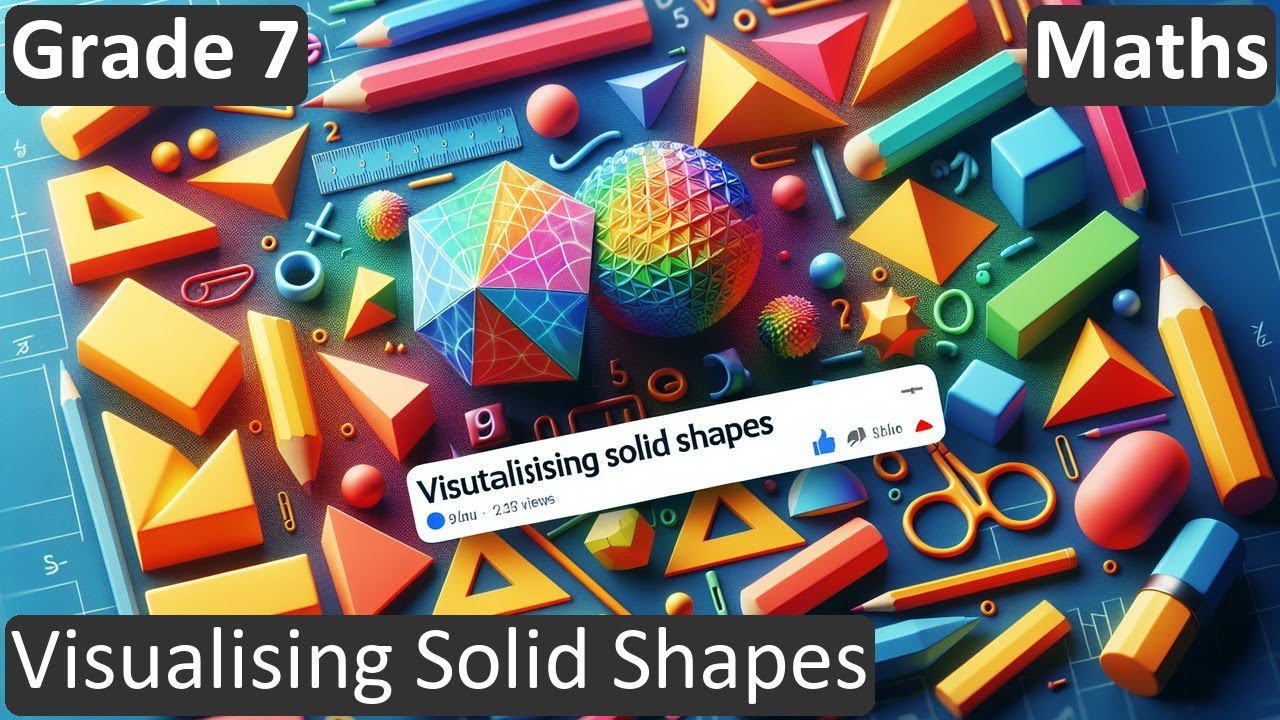
13.1 Introduction: Plane Figures and Solid Shapes
Understanding Dimensions
In this section, we will explore how to classify figures based on their dimensions.
Three-Dimensional Shapes: In our daily lives, we see many objects with different shapes such as books, balls, and ice-cream cones. These objects share a common characteristic: they all have some length, breadth, and height or depth. This means they occupy space and are known as three-dimensional shapes.
- Length, Breadth, and Height: These are the three dimensions that define the shape of an object.
- Examples of 3-D Shapes: Cuboids, cylinders, cubes, spheres, pyramids, and cones are all examples of three-dimensional shapes.
Activity: Match the Shape with the Name Try to identify the three-dimensional shapes and match them with their names:
- Cuboid
- Cylinder
- Cube
- Sphere
- Pyramid
- Cone
Two-Dimensional Figures
Figures that are drawn on paper and have only length and breadth are called two-dimensional figures. They do not have depth, so they do not occupy space in the same way as three-dimensional shapes.
- Length and Breadth: These are the two dimensions that define a two-dimensional figure.
- Examples of 2-D Shapes: Circles, rectangles, squares, quadrilaterals, and triangles are examples of two-dimensional figures.
Activity: Match the 2-D Shape with the Name Try to identify the two-dimensional shapes and match them with their names:
- Circle
- Rectangle
- Square
- Quadrilateral
- Triangle
Note: We can write 2-D in short for two-dimensional and 3-D in short for three-dimensional.
This section introduces the basic concepts of dimensions, helping us differentiate between plane figures (2-D) and solid shapes (3-D). Understanding these concepts is crucial as we move forward to explore more about the characteristics of these shapes.
13.2 Faces, Edges, and Vertices
Understanding Faces, Edges, and Vertices of Solid Shapes
Solid shapes have distinct characteristics that help us identify and differentiate them. These characteristics include faces, edges, and vertices.
Faces:
- A face is a flat surface on a three-dimensional shape.
- For example, a cube has six faces, each of which is a square.
Edges:
- An edge is a line segment where two faces meet.
- For example, a cube has twelve edges.
Vertices:
- A vertex is a corner where edges meet.
- For example, a cube has eight vertices.
Example: The Cube
Let’s look at a cube to understand these concepts better:
- Vertices: The cube has 8 corners or vertices.
- Edges: The cube has 12 edges, which are the line segments forming the skeleton of the cube.
- Faces: The cube has 6 flat square surfaces or faces.
Here’s a visual representation:
- Vertices: The 8 corners of the cube.
- Edges: The 12 line segments forming the skeleton.
- Faces: The 6 flat square surfaces.
Connecting 2-D and 3-D Shapes
Two-dimensional figures can often be seen as the faces of three-dimensional shapes. For example:
- A cylinder has two faces, both of which are circles.
- A pyramid (like the one shown in the figure) has triangles as its faces.
Understanding how 2-D figures form the faces of 3-D shapes helps us visualize and understand solid shapes better.
Visualizing 3-D Shapes on a 2-D Surface
To better understand three-dimensional objects, we can use nets. A net is a two-dimensional pattern that can be folded to form a three-dimensional shape.
Activity: Creating Nets
- Take a cardboard box and cut along its edges to lay it flat. This flat layout is the net of the box.
- By folding the net appropriately, you can reconstruct the original three-dimensional shape.
Understanding faces, edges, and vertices is essential for visualizing and constructing three-dimensional shapes from two-dimensional patterns. This foundational knowledge is crucial as we move forward to more complex concepts and applications of solid shapes.
